British tanks in the 21 century, or What to expect from these islanders. Part of 3
120 mm rifled gun L30A1 British tank Challanger 2
LEP Life Extension Program
It is possible that certain elements of the TES (Theater Entry Standard) configuration will be implemented on a larger number of tanks as part of the emerging Challenger 2 LEP program. However, the LEP specification basically means combating obsolescence — in other words, simply maintaining the platform’s capabilities at its current level in order to ensure that the Challenger 2 tank remains in service until its decommissioning date — without any improvement in performance. In general, compared with the original intentions, this program will be very limited in scope.
Nominally, the LEP program remains at the concept stage, moreover, it was officially announced that its assessment stage would not start until the end of 2015, and the main investment decision would not be made until around the 2017 year. With the exception of another urgent operational requirement, it is unlikely that its implementation will begin before the end of this decade. Nevertheless, the planning military structures and representatives of the combat units began to identify their needs and, as a result, a new thermal imaging camera for the gunner operator and / or the commander first appeared at the top of this list.
The British Thermal Imaging Common Module (TICM) II thermal imager is installed in a thermal imaging unit on an instrument mask from 80-s and it is becoming increasingly difficult to maintain. It also does not provide sufficient resolution and does not meet today's more stringent requirements for the positive identification of targets. There are also similar intentions for a radical upgrade of the electronics in the existing fire control computer, which is a further development of the computer originally developed for the M1A2 tank by Computing Devices Canada (currently part of General Dynamics).
Other immediate and aggressively promoted innovations include improved turret drives, a gun control system, improved battery management, an improved engine air cleaning system, and modified Hydrogas suspension units (already installed on Titan and Trojan engineering vehicles).
However, the progressive increase in the level of reservation affects not only the inertia of the tower and the characteristics of the suspension, but also complicates the steering of the machine itself. Therefore, the wish list includes various options for upgrading or replacing the engine and transmission, reducing the volume in this case theoretically allows for improved cooling and higher output power.
Another wish that inevitably entails more fundamental changes in the Challenger 2 tank is the introduction of a common (standard) architecture for GVA (generic vehicle architecture) vehicles. Ideally, the transition to it should be carried out as early as possible, since this could have a great impact on the approach to the modernization of the fire control system - one of the “measures” that is needed in the shortest possible time. GVA will also provide the necessary foundation for better integration between crew jobs and the future remote-controlled combat module (SDM) and better interaction with an improved external communications system in an armored battle group. (The successor to the Bowman system is being developed as part of the Morpheus program, whose development team is responsible for future communications systems onboard the Scout and Warrior CSP machines, but not the Challenger 2 tank.)
On historical reasons and tradition, questions regarding various aspects of the capabilities of Challenger 2, such as ammunition and protection, are decided on their own lines of financing. In order to establish cooperation, these flows along with the LEP program were “driven” into the framework of the comprehensive Armor MBT 2025 program, which also includes all issues related to the future use of armored units, including training.
The Challenger 2 tank defense system was undergoing constant upgrades, the latest of which was the installation of Dorchester armored modules; in the long term, the protection system will be improved by implementing the Active Integrated Protection System (AIPS) program. Under this program, similar to the US modular active protection system Modular Active Protection System (MAPS) program launched at the end of 2014, the development companies, in cooperation with the British Laboratory of Defense Science and Technology, will perform several stages of technology assessment and demonstration in the next three years. Its goal is to study ways of dealing with “uncomplicated” hand-held grenade launchers, “complex” anti-tank guided missiles and large-caliber tank shells based on technologies of direct destruction of attacking weapons and optical-electronic countermeasures. It is expected that any promising AIPS will be based on a modular and robust architecture and management system based on the promising development of the successful British GVA initiative; a similar approach was adopted in the framework of the British Common Defensive Aids System for the helicopter platforms.
Read more about the operational readiness mechanism of combat units under the Army 2020 program (A-FORM)
According to a Department of Defense document submitted to the Committee on Defense of the House of Commons in 2014, the A-FORM (Army 2020 force operations and readiness mechanism) operations of the armed forces and the readiness mechanism of the Army 2020 doctrine are based on a three-year training cycle for troops. calendar year. The first year is called “Preparation”, the second - “Operational tasks” and the third - “Other tasks”.
All units in the High Availability Force (Reaction Force) and the Adaptable Force will conduct combined-arms combat training at least every three years, although due to their task of participating in hybrid fighting, the High Readiness Force will do this more often. During the first “academic” year, military units consistently go through all levels, starting from individual training and ending with combined arms exercises with the participation of combat forces and equipment. For the High Availability Forces, this is the CT4 level and for the Incomplete Forces Forces - a lower CT3 level (training a company / squadron in the context of a battle group).
The training itself is a combination of combat and virtual activity, in which training on simulators is increasingly used to supplement field training, especially at the level of a military unit. For the High Readiness Forces of armored and mechanized units, combat group training takes place mainly at BATUS base in Canada, while their respective motorized infantry units are at the Salisbury Plain training ground. Incomplete readiness forces are trained on the basis of BATUK in Kenya and Salisbury Plain.
In their year of “Operational Tasks,” the units of the High Readiness Forces are on full alert. However, units are being trained in the field and on simulators as part of the combined-arms tactical training (CAST) and command-staff training (CATT) phases at Worminster. In order to ensure the readiness of the High Readiness Forces, all military units can also take part in exercises abroad.
The “Other Tasks” year lays the foundations necessary for the remaining years of the brigade's training cycle, but the main tasks of its regiments and battalions are to maintain their training in the “Training” year. Therefore, units in the year “Other tasks” are prepared only to the level of CT1, although some of them may conduct higher level training in order to “provide training” to other units. The tasks of “providing training”, as a rule, are to provide a demonstration fighting group for the Center for Ground Combat Operations, as well as to perform the role of a likely adversary in exercises at the BATUS and BATUK bases.
Fire power
In addition to fire control, the promising ammunition for the main armament will undoubtedly contribute to the firepower of the Challenger 2 tank.
Touching on the armor piercing, one of the experts in this field admitted that “mortality is a concern”, although at the unit level, instructors with Iraq’s combat experience claim that the Challenger 2 still has sufficient superiority “against everything we are likely to encounter.” To the question if during the training were conducted familiarization firing with sabotage shells, the officers answered “no more”, and the reason here may be that the initiation of the high-pressure charge of these munitions has a much greater negative effect on the crew of the tank and its compared with practical ammunition.
Armored piercing piercing projectile with a tracer (BOPST) L27A1, belonging to the class of kinetic ammunition, has a core made of depleted uranium; during combat firing, it can only be shot at targets irrigated with water spraying systems that nail radioactive dust to the ground. This ammunition, which received the nickname “shell with feathers” from the soldiers, was developed in the 80 of the last century and entered service in the 1994 year. Since then, he has not passed any improvements and improvements. A spokesman for the army headquarters confirmed that L27A1 remains “legitimate” despite political and environmental attacks (business and idle), which mainly concern the use of depleted uranium. The projectile is intended only for combat use.
There are also sufficient stocks of obsolete ammunition BOOPST L23A1, whose core is made of a tungsten-nickel-copper alloy. L23A1 may be politically more correct, but it (the soldier's nickname “projectile-shoe”) is much less lethal compared to L27A1, since the technology of this projectile is a dozen years older and moreover it was created for firing with a charge of lower pressure than those munitions that are optimized for the L30 high-pressure guns of the Challenger 2 tank.
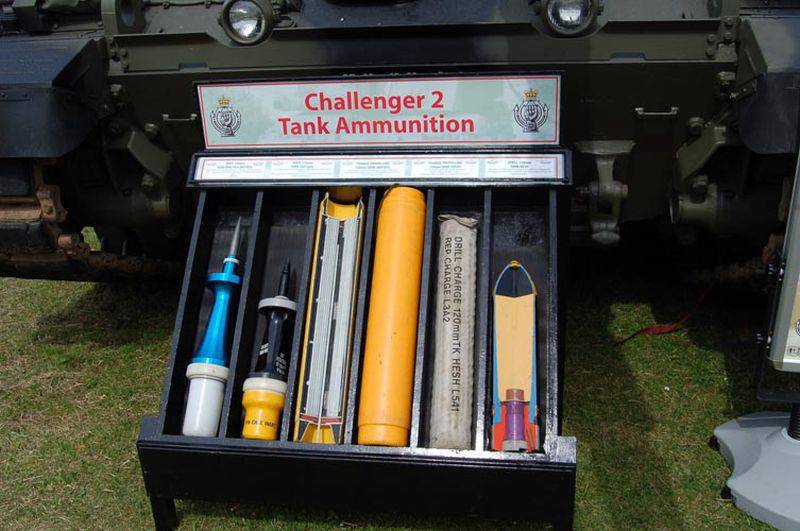
Established ammunition tank Challenger 2
The reserve of the British army is preparing for live firing
In order to meet the requirements of Oman (the only foreign buyer Challenger 2), instead of the original L8 charge, taken out of production, the shelf life of which has also expired, the L23A1 qualified charge for LBNTX L18A1 medium charge. The L18A1 charge, currently produced for the L29A1 practical armor-piercing projectile used by the Challenger 2 crew, gives the L23A1 projectile a lower initial speed than the previous L8 charge. As a result, armor-piercing characteristics were even worse than they were 30 years ago.
Other regular ammunition of the Challenger 2 tank are ballistic-related armor-piercing-high-explosive projectile with a crushable head part (HESH) L31A7 and smoke equipped with white phosphorus L34A2 WP Smoke. For shooting, they use the same L3A2 captive charge, as for the other regular ammunition, which gives the initial speed 670 m / s.
Although the design of a universal armor-piercing high-explosive ordnance with a crushable L31A7 HESH head has not changed in essence since the time it was commissioned for the Chieftain in the middle of 60, its high-explosive warhead has a significantly destructive effect on light, medium and heavy armored targets, and sufficient impact on unarmored vehicles and dismounted infantry. It can also be used to destroy bunkers and underground shelters and shelters in brick or concrete walls. Despite its low initial speed compared with auxiliary ammunition used on other tanks (which usually have initial speeds in the 830-1400 range of m / s), this rotation-stabilized projectile is successfully used for targets outside normal combat distances. Crews periodically carry out live firing by this projectile: they make two or three shots at a distance of 6-8 km using the “Long-Range HESH” fire control system (FCS) installation.
According to one of the officers, “what we deploy depends on a set of goals.” For example, in the initial stages of “Telic” operation, the Challenger 2 regiments were supplied with L27Al, L31A7 HESH and L34A2 WP Smoke ammunition. In the subsequent stabilization operations, when the main concern was to minimize indirect losses, the choice of crews was also expanded with practical ammunition. As a rule, a practical high-explosive projectile with collapsible warhead L32A6 was used in Basra to pierce obstacles or walls and, according to one tank commander, for such purposes as “mortar calculations in built-up areas using the three-projectile technique”. The L29A1 practical armor-piercing ammunition could also be used to confuse and disorient such threats as long-range snipers.
"We are in the early stages of developing requirements for promising ammunition that could lead to a new universal high-explosive fragmentation shot for a rifled gun." Most likely, a large part will have a manually set fuse with three modes: with time setting, shock, and with delay. It is unlikely that the Challenger 30 rifled L2 cannon will receive an “intelligent breech” with a built-in fuze programmer. Although something similar has already been added to the 120-mm smoothbore guns of the Abrams M1Al tanks of the US Marine Corps and the German Leopard 2A7 for remote installation of a three-mode fuse of the Rheinmetall DM11 programmable universal fragmentation ammunition.
In the short term, no changes are expected in the auxiliary armament of the Challenger 2 tank, but the installation of the DBMS will allow you to get with it either an 12,7-mm heavy machine gun (this is installed in the UABM on Bulldog machines) or an 40-mm automatic grenade launcher. However, the requirement for placing additional types of ammunition can take up the space currently used for storing 7,62 caliber cartridges. If you are critical, then in order to avoid interfering with the lines of sight of the existing Challenger 2 optics, the DBMS itself must be moved backwards from the charging point to the stern of the tower and it is desirable that some or even all crew members could remotely control them from their seats. This can be done only if the Challenger 2 tank has an electronic architecture that allows for the necessary exchange of video data.
Another potential use of the integrated SDS is to install additional launchers for medium-range and long-range guided missiles, such as the upgraded version of the Javelin anti-tank missile already in service with the British army. This will give the Challenger 2 a similar opportunity that Russian tanks have. From their 125-mm smooth-bore guns, you can launch guided missiles with a range of 5 km AT-8 Songster (9K112 Cobra) and AT-11 Sniper (9M119 series) entered the 70-x and 80-x years of the past.
Tank Regiment Type 56 Challenger 2
The way forward
So, apart from the protection systems and ammunition, any changes in equipment and subsystems not covered by the program for extending the service life of the tank are not funded. However, the “group of the future” at the headquarters of the army, which was entrusted with studying the perspective on the 15-20 years in advance, concluded that the main battle tank (MBT) would remain in service for many years, and certainly later than the current date for the removal of the Challenger 2 tank with weapons scheduled for 2035 year.
In the United States, there is talk of extending the life of Abrams tanks to 2040-2050, and the French and Germans are jointly discussing the possibility of creating a new-generation tank-like machine that will replace the Leclerc and Leopard 2 tanks at about the same time.
The holding of war games as part of the Agile Warrior evaluation project has led this group to conclude that a complete set of platforms will always be needed to combat future probable threats. This kit will require a platform of this type that could provide secure mobility and high-precision fire for the future battlefield.
The only thing that such a platform could have deviations from the configuration of today's tank, so is its size. At the same time, a big breakthrough in active protection is not expected in the near future and therefore it’s impossible to "put" the capabilities of today's tank into a vehicle with 10-20 tons.
“Most of our current systems will still be in service in the next 20 years, and this, accordingly, will require some funding or renewal, or even all at once. The Agile Warrior war games allowed us to identify some areas to which we should pay special attention, ”members of the future group say: In the medium term, the development of the current park will most likely go in the field of electronic architecture and active protection. The group does not expect to see fully unmanned tanks, although the technology of autonomous platforms, nevertheless, quite possibly will become an implementation tool for existing ground combat vehicles, allowing their crews to be removed for false attacks or “demonstrations”, for evacuation, making passages in minefields or targeting bridges.
There is also a possibility that the tanks will have to work in more and more difficult areas, although so far they have preferred to avoid built-up areas as much as possible. For operations in such areas, advanced electronics systems, including GVA and remote control / computer control systems with high-speed data channels, are essential. In addition, if in the past, frontal armor was the basis for protecting the tank, then with the appearance of mines, improvised explosive devices and ammunition for destruction from above, it became necessary to protect the upper hemisphere.
Comment
With one notable exception in the field of protection, the successive steps of effective British Defense Department managers stopped the development of MBT capabilities by 20 years. Therefore, it is not surprising that there are expenses that need to be recalled and corrected, at least with regard to certain characteristics and readiness of those Challenger 2 tanks, which were decided to remain in service until the 2035 year and beyond. The list is potentially long, but, first of all, in order not to become a “digital orphan” among the modernized air and ground platforms with which it is expected to interact (and on which its survival will depend to a greater or lesser degree) external and internal digital channels. It will also need a set of advanced ammunition that will effectively deal with the future set of targets and restore the excellent combat capabilities of the Challenger 2 tank.
Materials used:
www.gov.uk
www.militaryimages.net
otvaga2004.mybb.ru
www.ukdefencejournal.org.uk
www.wikimedia.org
www.wikipedia.org
en.wikipedia.org
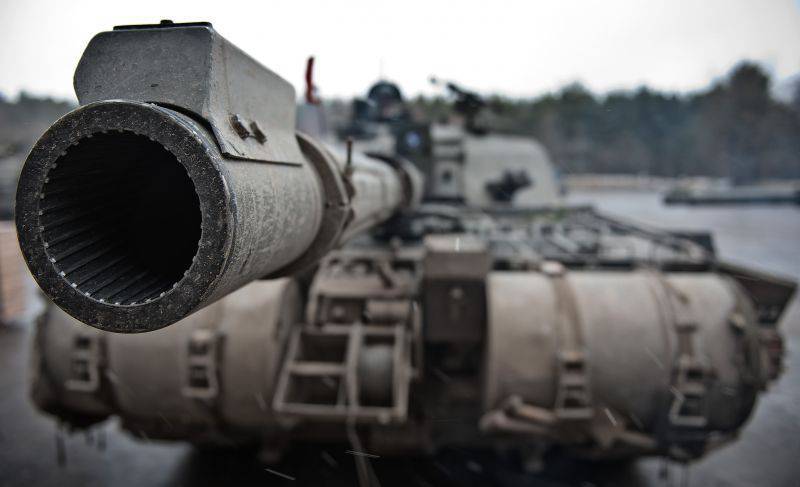
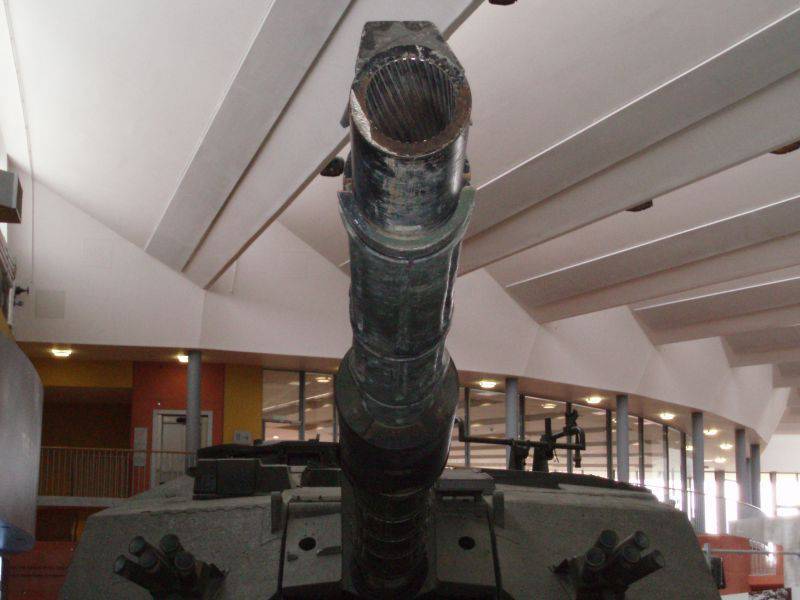
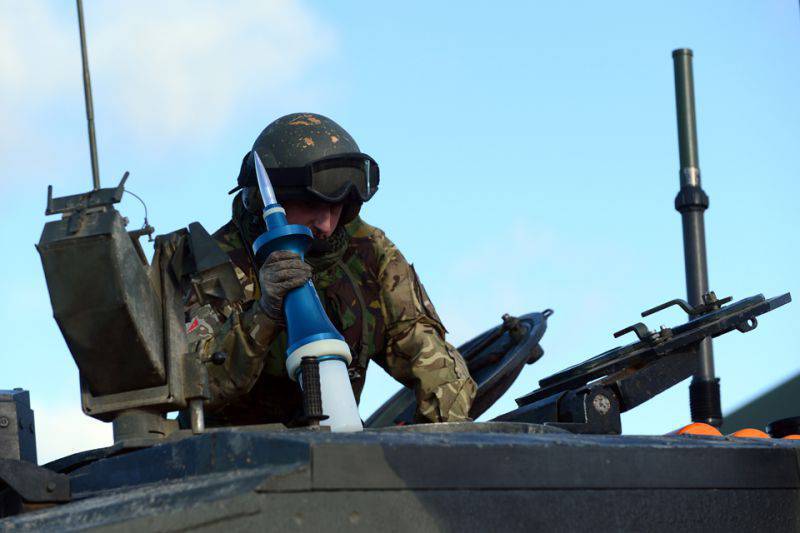
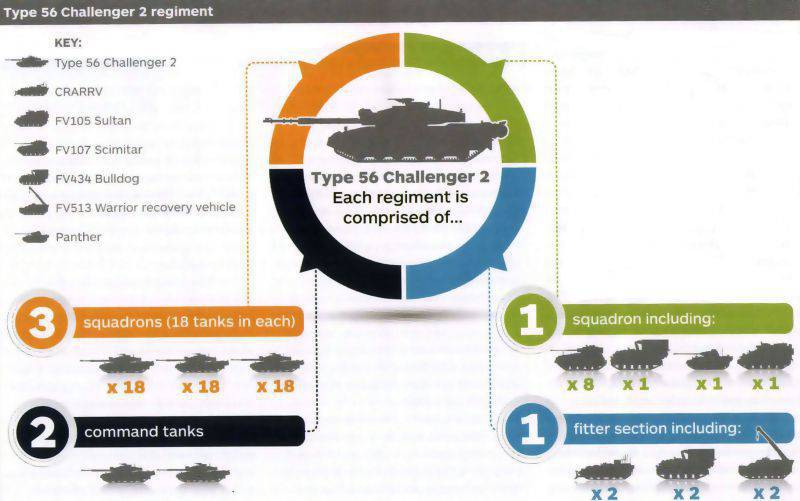
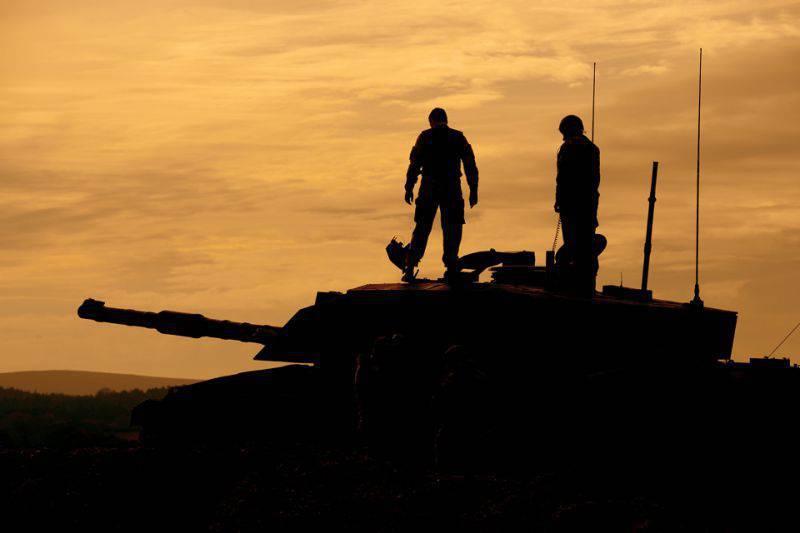
Information